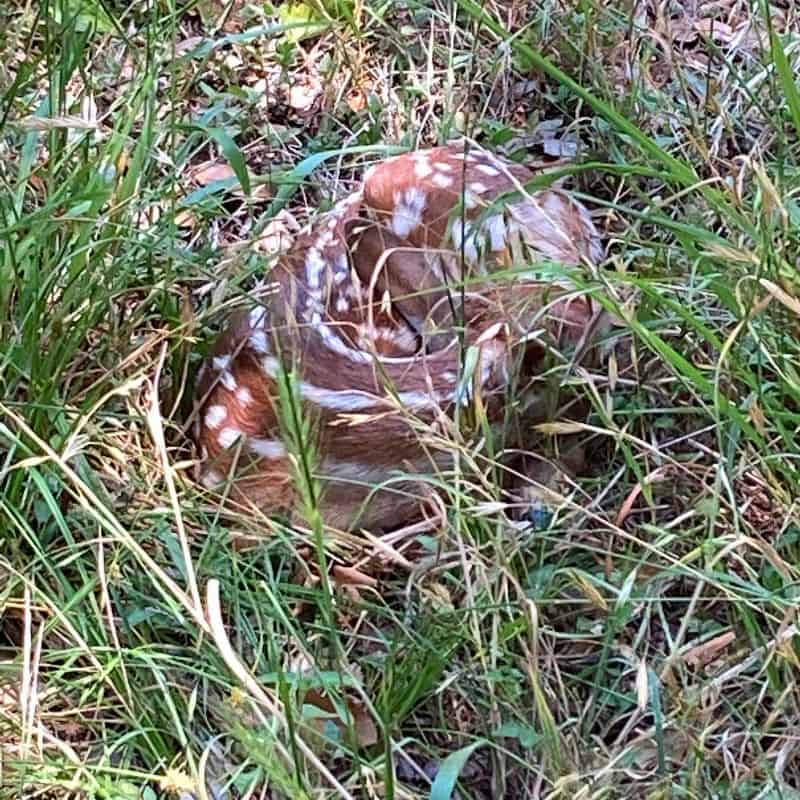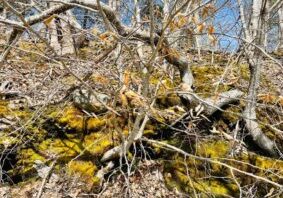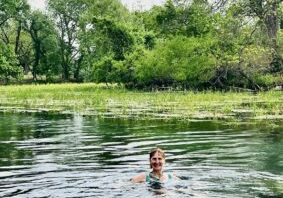| Dear beloved,
It’s birthing season for our neighborhood white-tailed deer herd. Following the herd through the cycle of the year provides precious reminders of what is real and true. Their cycles are something I’ve grown to count on during times when other things feel less dependable.
In Autumn, as our Texas temps begin their slow descent, the bucks make their way from the woodlands to join the herd for mating season. It’s not unusual to find an 8 point buck staring me down as I step outdoors to greet the day. Then, just as quickly as they arrived, the bucks disappear when winter arrives. We are then left with the peaceful contentedness of the does and their maturing offspring. As spring moves to summer and the Texas temperatures soar the does late in their pregnancy, heavy now with fawn, begin congregating in the shade of the small mixed wood grove in my back garden. There they spend lazy late afternoons grooming one another and resting.
Mid May the babies begin to arrive and what a treat it is. This week one was born right in the front garden and it has made our land his home. Heading out to pick herbs yesterday I spotted him curled up in the grass napping. So peaceful and innocent I wanted to join him. It will be a few weeks before he joins the herd and in the mean time I will treasure his presence, so honored to know that he feels safe and secure sharing space.
This simple act of becoming a careful observer has granted me a comforting sense of alignment. Co-residing with this herd that lives in balance with nature reminds me that I can choose to do that as well. That sounds in good in theory but what does that really mean? I believe it begins with first recognizing and acknowledging the change of seasons.
You can do this despite where you live by being a keen observer. It doesn’t take much awareness to be awed by the everyday miracles within plants and animals. Discover a space for your observations where you can check in on a daily basis and note what is changing and why.
This actually has a name, it is called phenology, the observance of cyclical and seasonal natural events. These events occur all around us in nature: from plants blooming or setting seed, to migrating animals arriving or leaving, or the first or last killing frost of the year. For millennia, these kinds of observations were not only interesting and enriching to our human ancestors, but their lives and safety depended on it. To be successful with hunting, gathering and later cultivation of food sources our ancestors were required to maintain an intimate connection to the natural world through careful observations and record-keeping.
Aldo Leopold (1887-1948) America’s grandfather of Phenology, dedicated his life to the observation and documentation of nature’s cycles. Spending weekends at his farm property, “the shack” along the Wisconsin river he and his family conducted their own land restoration projects that included restoring prairie grasses and reforesting. His experiences inspired his prolific writing of essays, assembled upon his passing to become, A Sand County Almanac.
Another way to observe and document nature is through poetry. In my opinion no one has done that better than Mary Oliver. Her lens brings to life the minute preciousness that can so often be taken for granted. And so I will close here with a favorite of mine.
The Fawn, Mary Oliver
Sunday morning and mellow as precious metal
The church bells rang, but I went
To the woods instead.
A fawn, too new
For fear, rose from the grass
And stood with its spots blazing,
And knowing no way but words,
No trick but music,
I sang to him.
He listened.
His small hooves struck the grass.
Oh what is holiness?
The fawn came closer,
Walked to my hands, to my knees.
I did not touch him.
I only sang, and when the doe came back
Calling out to him dolefully
And he turned and followed her into the trees, Still I sang,
Not knowing how to end such a joyful text,
Until far off the bells once more tipped and tumbled
And rang through the morning, announcing
The going forth of the blessed.
Be well,

|





